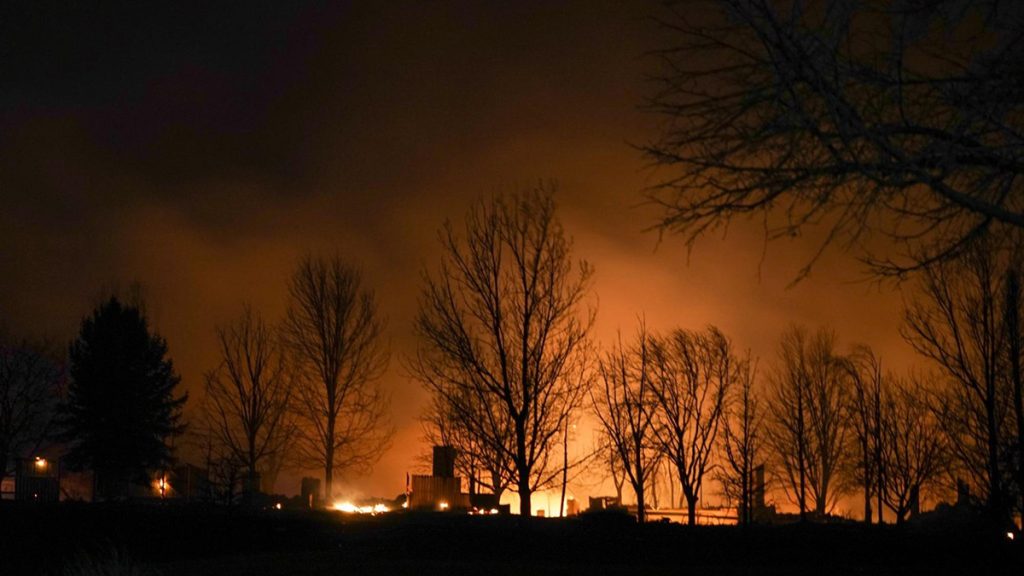
Would you consider a pop-up newsroom to cover disasters and other pressing issues in your community? Photo: Marshall Fire on Dec. 30, 2021 in Boulder County, Colorado. John Herrick | Boulder Reporting Lab
Would you try this new in-depth local reporting tool?
A fellow local news entrepreneur is excited about the concept of pop-up newsrooms but worries about adding to the ‘mental load’ of small newsroom leaders
Would you try a new in-depth local reporting tool?
Annelise Pierce runs Shasta Scout, a newsroom similar in size and ambition to Boulder Reporting Lab — both newsrooms aim to fill information gaps and build community trust. I asked her if she would consider launching a temporary investigative newsroom with community members, especially subject experts, to address essential information needs.
Sharing a sneak peek of my guide to pop-up newsrooms with Pierce, I anticipated both positive and critical feedback. Yet the main takeaway was the importance of small newsrooms trying the pop-up model and my responsibility to make the concept more exciting, accessible and inspiring.
Here are the key takeaways from our chat that provide as much insight into the state of hyperlocal nonprofit startup journalism as they provide guidance for me as I aim to help newsroom leaders navigate collaborative approaches.
Desire for more in-depth reporting
Shasta Scout produces about one to two in-depth stories a month. “We have so many more we would like to tell,” Pierce said, echoing what is a fact of life for running a small newsroom. What’s preventing you from doing more, I asked? Staff capacity, she said — again, an almost-universal challenge.
Intrigued by the idea of project-specific capacity building
This pop-up approach “sounds easier than other approaches I’m considering to increase our capacity for reporting on specific projects. It seems like less of a lift and less of a risk,” Pierce said.
I agreed, as this concept is designed to be temporary and relatively low risk. If it fails, it’s more a loss of time, and there’s no time commitment beyond the project.
Consideration of funding approaches
What other approaches are you considering to add in-depth reporting? I asked. Pierce mentioned seeking long-term funding for additional newsroom staff as the main approach she’s looking for — freelancers, interns, fellowships. She said she’s also applying for collaborative reporting project grants. “But these are all less flexible ideas, less adaptable to urgent or shorter-term needs,” she said. “And they are all higher risk for a startup, where we can literally barely see the next three months ahead.”
Differentiating the pop-up concept
There are so many community reporting tools. How is this different? The notion of a pop-up made Pierce want to keep reading. “It’s a concept I know from other industries and it sounds doable. More like an event. Something I could commit to without a huge lift,” she said. But the idea of “community journalists” was, by contrast, a stop sign. It felt like other similar projects that train or leverage local residents to cover their communities. Some of those programs can feel overwhelming to launch and sustain. “So I had a real nose dive in interest immediately,” she said.
Leveraging existing relationships
What became clear from reading through the guide, Pierce said, is that this is not about transforming ordinary people in our communities into journalists. It’s about working with technical or subject matter experts with a particular aptitude for specific reporting — be them students, nonprofit leaders, professional experts, scientists and more. The idea is to leverage existing relationships and transform them to make journalism together — tapping into each other’s superpowers. The best part is it’s temporary.
“This is a big difference, and I think it should be laid out really clearly from the start, before you lose the reader,” Pierce said. It makes it more exciting, she said. “I’ve already built partnerships like this. This would just be a formalization of those partnerships. So rather than thinking of pop-up newsrooms as a new thing to try, thinking of it as something that I can use with existing relationships. And then once I am successful, perhaps expand to other opportunities.”
Concept evaluation and refinement
“My overall feeling is that you have a very strong concept here,” Pierce said. But for a news media founder just skimming through in 10 minutes to make a yes/no decision, she added, it’s too much, too quick. It needs to better set the stage for what differentiates it from other approaches.
“The mental load is a lot for us as newsroom leaders. Each new idea comes with its own cost of worry and fear and strategy,” she said. Hard sell the concept, she urged. Will do!
Cite this article
Feldman, Stacy (2024, February 26). Would you try this new in-depth local reporting tool?. Reynolds Journalism Institute. Retrieved from: https://rjionline.org/news/would-you-try-this-new-in-depth-local-reporting-tool/
